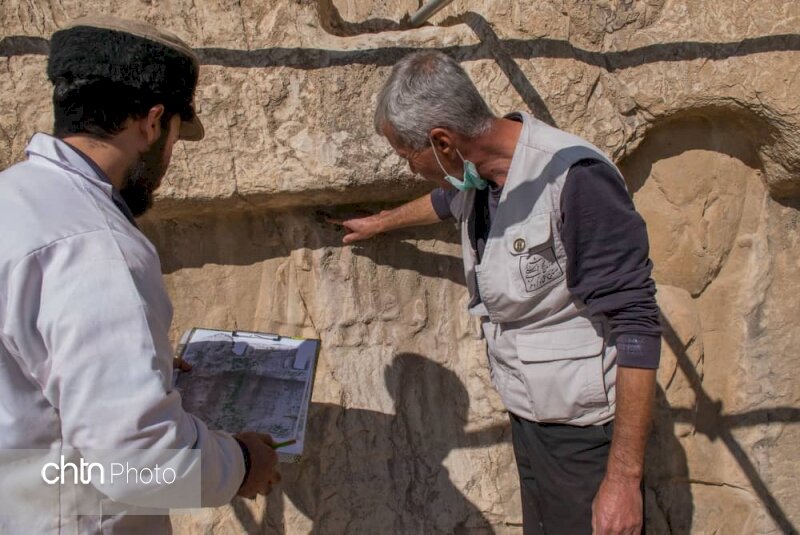Royal bas-relief being restored, preserved for future generations

TEHRAN –A preservation and restoration project has been commenced on a Sassanid-era (224-651 CE) royal bas-relief in Naqsh-e Rostam, a massive royal rock-hewn necropolis, situated near Persepolis in Fars province, southern Iran.
The bas-relief, which depicts Iranian king Bahram II (r.276-293) and a number of his courtiers, has been damaged due to environmental factors such as rain, wind, changing temperatures, CHTN quoted Hamid Fadai, director of the world heritage site of Persepolis as saying on Saturday.
A team of archeologists and cultural experts are estimating the extent of the damage to fully plan the restoration and rehabilitation works needed for the historical relic, he added.
Bahram II, the fifth Sasanian King of Iran, was the son and successor of Bahram I (r. 271–274). The Sassanid era is of very high importance in the history of Iran. Under Sassanids, Persian art and architecture experienced a general renaissance. Architecture often took grandiose proportions such as palaces at Ctesiphon, Firuzabad, and Sarvestan that are amongst highlights of the ensemble.
Crafts such as metalwork and gem-engraving grew highly sophisticated, yet scholarship was encouraged by the state. In those years, works from both the East and West were translated into Pahlavi, the language of the Sassanians. Rock-carved sculptures and bas-reliefs on abrupt limestone cliffs are widely deemed as characteristics and striking relics of the Sassanian art, top examples of which can be traced at Bishapur, Naqsh-e Rostam, and Naqsh-e Rajab in southern Iran.
The Achaemenid necropolis of Naqsh-e Rostam, meaning “Picture of Rostam” is named after a mythical Iranian hero which is most celebrated in Shahnameh and Persian mythology.
One of the wonders of the ancient world, Naqsh-e Rostam embraces four tombs are where Persian Achaemenid kings are laid to rest, believed to be those of Darius II, Artaxerxes I, Darius I and Xerxes I, although some historians are still debating this.
There are gorgeous bas-relief carvings above the tomb chambers that are similar to those at Persepolis, with the kings standing on thrones supported by figures representing the subject nations below. There are also two similar graves situated on the premises of Persepolis that probably belong to Artaxerxes II and Artaxerxes III.
Beneath the funerary chambers are dotted with seven Sassanian-era (224–651) bas-reliefs cut into the cliff depict vivid scenes of imperial conquests and royal ceremonies.
ABU/AFM
Leave a Comment